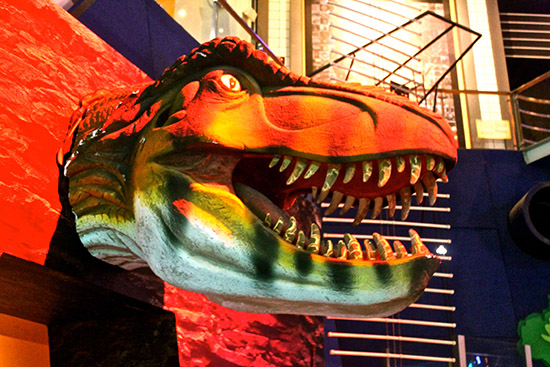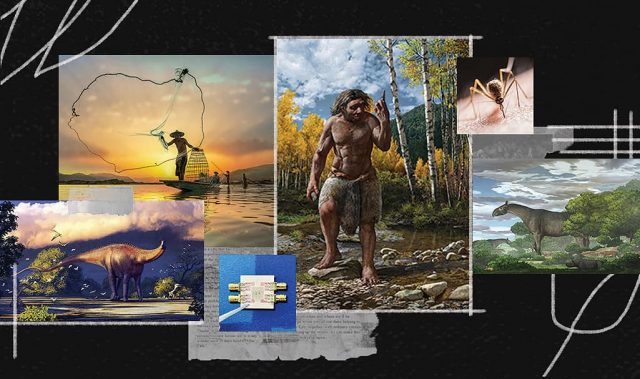
AsianScientist (Oct. 25, 2013) – Dinosaurs have been extinct for a long time, but they continue to be an area of research for scientists until today.
Take a step back in time into the land of the lost. An era that was once home to massive and ancient animals that roamed the earth. We’ve heard about the prehistoric creatures with big teeth and yet, bigger appetites. And now they have been unveiled at the ‘Titans of the Past- Dinosaurs and Ice Age Mammals‘ exhibition.
Launched on Thursday at the Science Center Singapore, the 3,000 square meter exhibition, which will run from October 25, 2013 to February 23, 2014, displays dinosaurs and ice age mammals in their natural state, featuring their growth and behavior using animatronic effects.
The highlight of the exhibition showcases the largest Tyrannosaurus rex (T. rex) skull ever found. Each turn in the hall drew attention to new species and by the last exhibit, the Argentinosaurus, the world’s biggest dinosaur, took the stage. At 36 meters in length and seven meters in height, its head and tail stretched from one end of the hall to another.
“I don’t think we have ever exhibited any thing of this size,” said Mr. Clarence Sirisena, deputy chief executive at the Science Center Singapore. “For the first time in Asia you are seeing things that you have never been able to see before, like the huge T. rex skull, which I spent more than an hour admiring.”
Valued at more than US$1.5 million, the infamous skull was discovered by an archaeologist who collected the specimen and brought it to the Museum of Rockies in Montana, US, leaving it untouched for 30 years.
“We put them all together as a complete skull and realized at that time that it was the largest T.rex and we had no idea how large it was until we put it together,” said Dr. Jack Horner, curator of paleontology at the Museum of the Rockies.
Horner didn’t want this to be a conventional exhibition—instead he wanted to show how dinosaurs were in many ways similar to humans. Based on the research conducted by his team, they found that dinosaurs grew very differently from other reptiles and showed a strong resemblance to human growth and behavior.
“What we’ve discovered is as they are growing up, they actually change the way they look, which is very similar to human beings. We humans change as we grow up as well, and children look very different then their parents,” said Horner. “There is evidence that dinosaurs were caring for their young. The exhibit is about growth and it’s also about behavior, and how the animals behaved because of the way they grew.”
The exhibition not only tells the story of a dinosaur’s life but it also uses real fossils to educate visitors about the prehistoric era. Horner’s research states that more than one-third of all dinosaur species from the Cretaceous Period may actually be juveniles and not different species. Now, that leaves us something to ponder on.
——
Copyright: Asian Scientist Magazine.
Disclaimer: This article does not necessarily reflect the views of AsianScientist or its staff.












